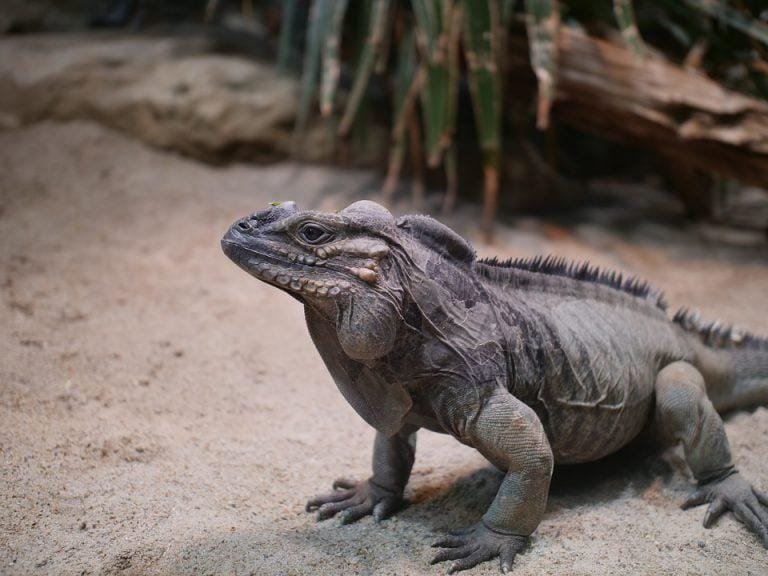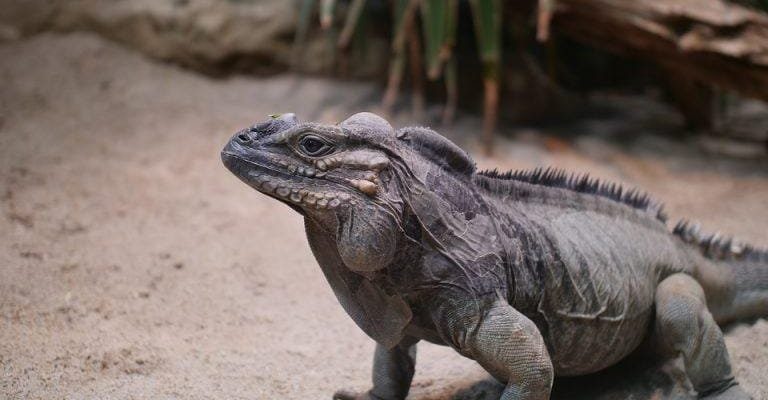
Rhino iguanas, with their rugged appearance and charming characteristics, can be a bit of a mystery, especially when it comes to how long they live and how big they get. You might be wondering, “How long will my rhino iguana be around? And how fast will it grow?” Let’s explore these questions together. By understanding their lifespan and growth patterns, you can better prepare for the journey of being a rhino iguana owner.
Understanding Rhino Iguanas
To really grasp the lifespan and growth expectations of a rhino iguana, it’s important to understand what they are. Rhino iguanas (scientific name: *Cyclura cornuta*) are large lizards native to the Caribbean islands of Hispaniola and surrounding areas. They’re known for their distinctive appearance, which includes a robust body, spiky crests, and a large, horn-like structure on their snouts that resembles a rhinoceros horn—hence the name!
These lizards thrive in rocky and arid environments, which shape their behaviors and lifestyle. In the wild, they’re herbivores, munching on leaves, fruits, and flowers. As pets, they require a carefully managed diet rich in greens and occasional fruits to stay healthy. Their fascinating behaviors and unique looks make them a popular choice among reptile lovers, but they do come with specific care requirements.
Lifespan of Rhino Iguanas
Honestly, one of the most appealing aspects of having a rhino iguana is their impressive lifespan. In captivity, these reptiles can live anywhere from 20 to 40 years! That’s right—when you adopt a rhino iguana, you’re potentially signing up for a long-term relationship. This longevity is much like owning a dog or cat; you’ll need to provide love, care, and attention throughout their life.
The lifespan can vary based on several factors, including genetics, diet, habitat conditions, and overall care. A well-cared-for iguana that lives in a properly maintained environment can expect to live much longer than one that doesn’t. So, the more effort you put into their care, the more years you’ll likely enjoy their company.
Growth Expectations: From Hatchling to Adult
So, how quickly do rhino iguanas grow? When they first hatch, baby rhino iguanas are quite small, usually around 6 to 8 inches in length. However, they can grow rapidly in their first few years. Under ideal conditions, they may reach adult size (around 4 to 5 feet) by the time they are 4 to 5 years old. It’s pretty amazing to see how quickly they develop!
Here’s the thing: growth rates can vary based on several factors, such as diet quality and habitat. If they have the right diet, including high-quality greens and occasional protein sources, they’ll grow more robustly. Conversely, a poor diet can stunt their growth, so it’s essential to feed them right from the start.
Factors Affecting Lifespan and Growth
Several factors play a role in the lifespan and growth of rhino iguanas. Here’s a closer look:
- Diet: A balanced diet ensures proper growth and can help extend their lifespan. Fresh greens, vegetables, and occasional fruits are critical, while processed foods should be avoided.
- Habitat: Providing a spacious, clean, and secure environment helps keep your iguana healthy. They need room to roam and bask in the heat, which mimics their natural habitat.
- Health Care: Regular check-ups with a veterinarian who specializes in reptiles can catch potential health issues before they become serious.
- Stress Level: Stress can negatively impact both growth and lifespan. Ensure their space is quiet and safe, and make gradual changes to their environment to help minimize stress.
These factors serve as a foundation for your iguana’s overall quality of life, so keeping them in check is essential.
Signs of Healthy Growth and Aging
As a rhino iguana owner, you’ll want to be on the lookout for signs of healthy growth and aging. Healthy rhino iguanas typically have smooth skin and vibrant colors. Here are a few signs to keep an eye on:
- Weight Gain: A healthy iguana should steadily gain weight over time. If you notice sudden weight loss, it could be a cause for concern.
- Active Behavior: An active and curious iguana is usually a healthy iguana. If your pet seems lethargic or inactive, it might be a sign of stress or illness.
- Good Appetite: A healthy iguana will have a strong appetite for their food. If they suddenly lose interest, that could indicate an issue.
Monitoring these signs can help you better understand your rhino iguana’s growth and health.
Owning a rhino iguana can be a rewarding experience filled with excitement and unique challenges. From their impressive lifespan of 20 to 40 years to their fascinating growth patterns, these reptiles offer both companionship and a glimpse into the wild. By providing the right care, balanced diet, and proper habitat, you can ensure that your rhino iguana lives a long and healthy life.
So, if you’re thinking about adding one of these incredible creatures to your life, be prepared for a long-term commitment. With the right knowledge, love, and attention, your rhino iguana can thrive and grow into a magnificent pet that becomes a cherished part of your family. Enjoy the adventure of rhino iguana ownership—there’s no other reptile quite like them!

